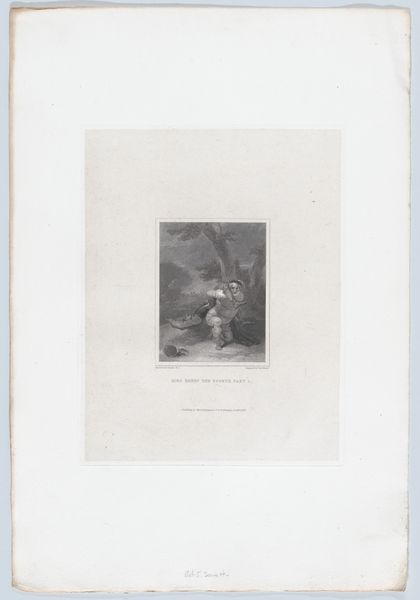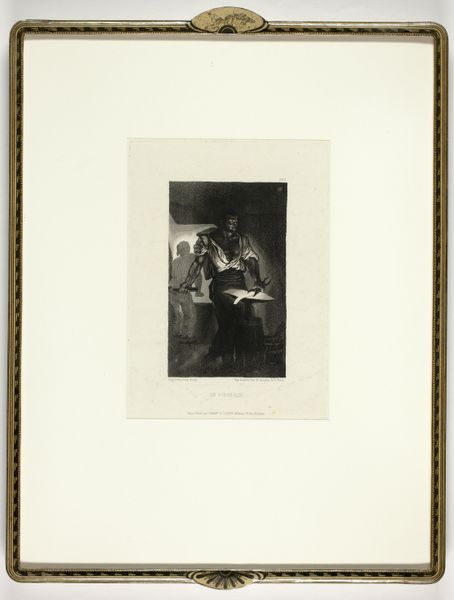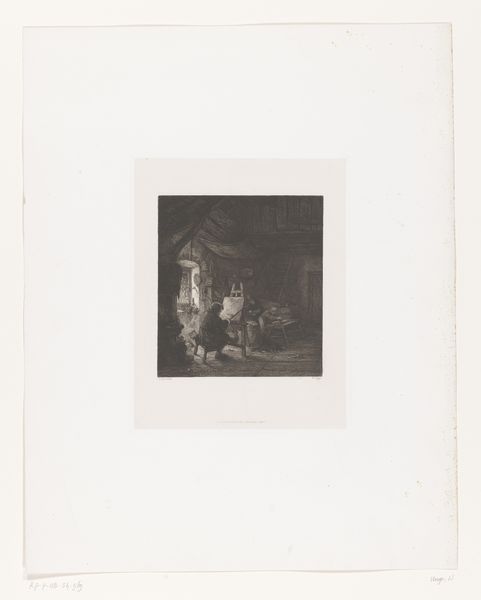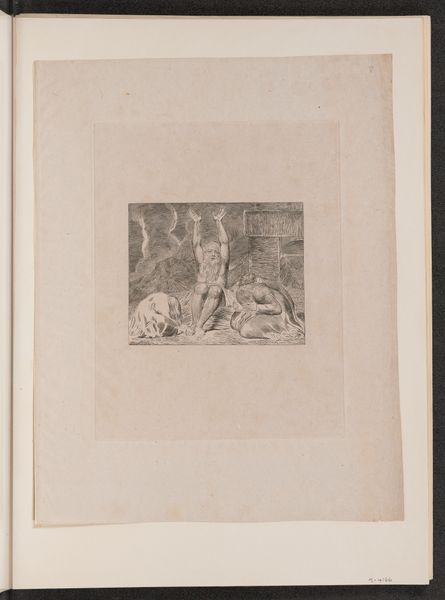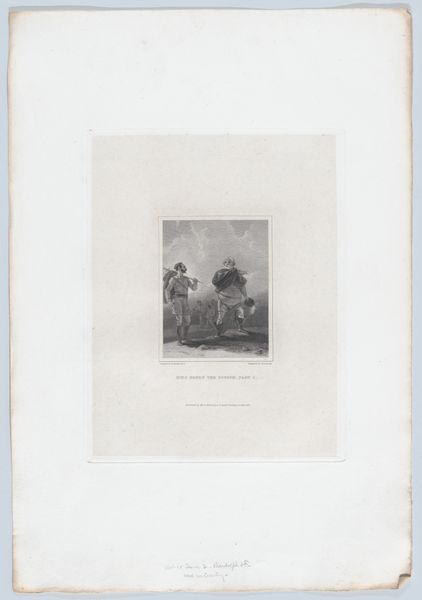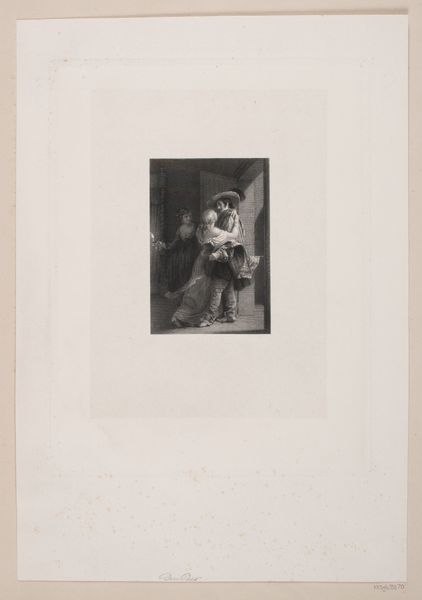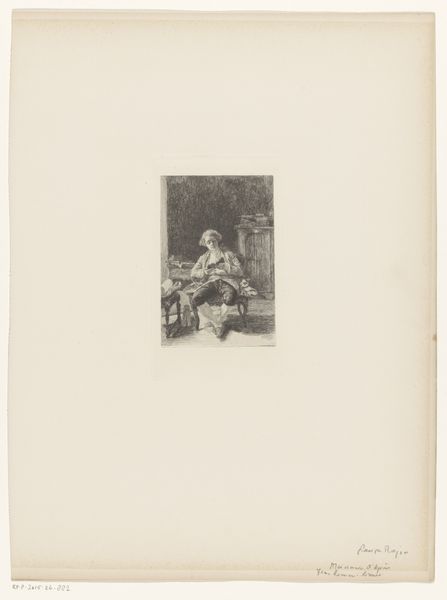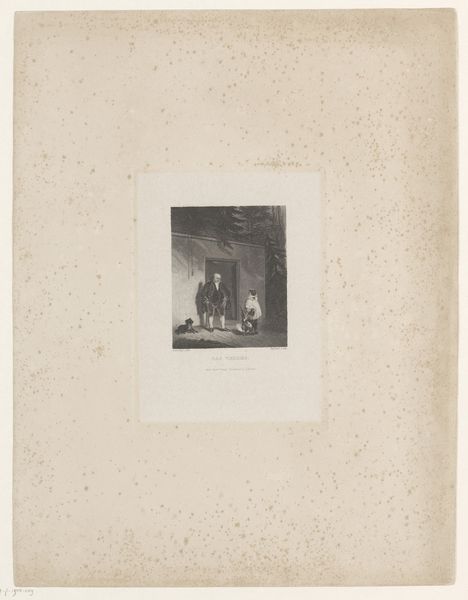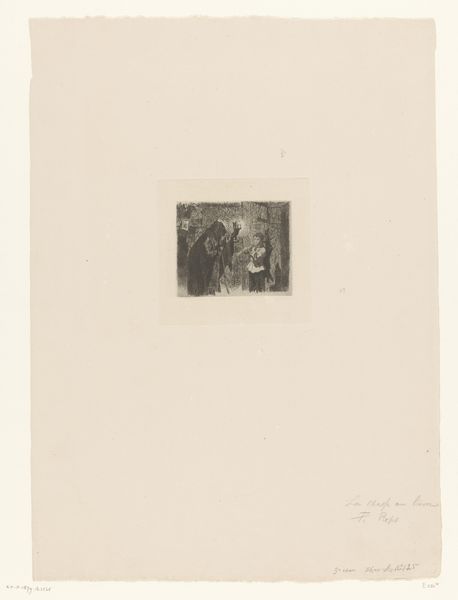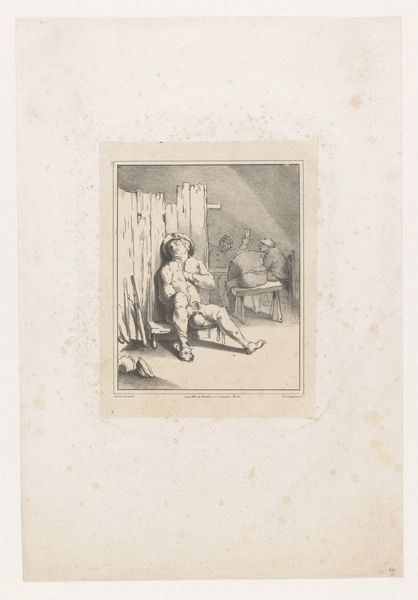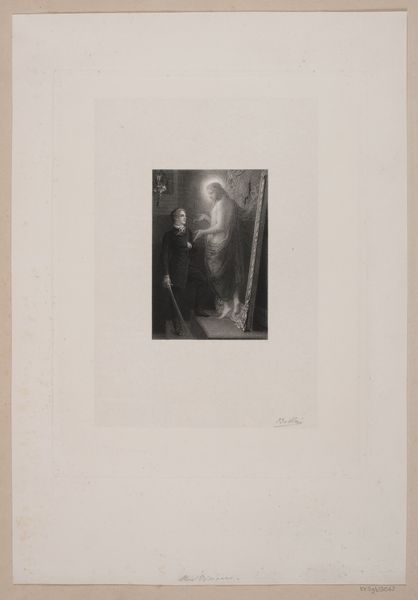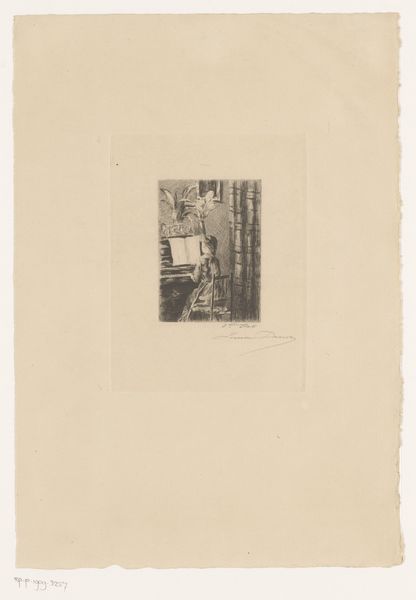
Prince Henry and Falstaff at the Boar's Head Tavern, Eastcheap (Shakespeare, King Henry the Fourth, Part I, Act 2, Scene 4) 1825 - 1826
0:00
0:00
drawing, print, engraving
#
portrait
#
drawing
# print
#
figuration
#
romanticism
#
men
#
genre-painting
#
history-painting
#
engraving
#
sword
Dimensions: Plate: 9 3/4 × 7 9/16 in. (24.8 × 19.2 cm) Sheet: 17 1/4 × 11 3/4 in. (43.8 × 29.8 cm)
Copyright: Public Domain
Editor: Here we have Charles Heath the elder's engraving, "Prince Henry and Falstaff at the Boar's Head Tavern," created around 1825 or 1826. The scene, pulled from Shakespeare's Henry IV, Part 1, looks chaotic and performative to me. What draws your eye in this image? Curator: What I notice first is the way Falstaff, at the center, stages himself. He wields that sword and shield with theatrical exaggeration. He's not just telling a story; he's re-enacting a memory. The artist wants to connect to something deeper. Consider the Boar's Head Tavern itself – for its audiences, it would have conjured immediate, powerful, nostalgic associations. Why do you think the artist chose this specific scene? Editor: Maybe because it's such a memorable moment in the play? Falstaff's larger-than-life personality and the youthful Prince Hal together in this disreputable setting... Curator: Precisely. Heath capitalizes on pre-existing cultural memory. It’s not simply illustration; it's cultural shorthand. He presumes the viewer recognizes the layered meanings, the contrast between the future king and his roguish companion. That recognition then creates a kind of social bond – a shared understanding of English history and literature. Note how everyone is a type rather than a realistic individual. Are there similar characters who inhabit modern popular imagination today? Editor: I can see that! Maybe modern fictional sidekicks? The appeal of seeing someone in authority breaking from tradition, associating with rebels? Curator: It is less about the subversion, and more about exploring archetypes. That visual symbolism invites a certain recognition, like pieces of a familiar, cherished story falling into place. Consider the historical painting tradition that romanticizes the past. It suggests something timeless in these human dramas. How would people today see this engraving versus when it was created? Editor: It's a wonderful reminder of how images embed themselves in our culture, accruing layers of meaning over time. Curator: Exactly. From theatrical performance to social commentary, this work reflects and refracts the enduring power of symbols.
Comments
No comments
Be the first to comment and join the conversation on the ultimate creative platform.
